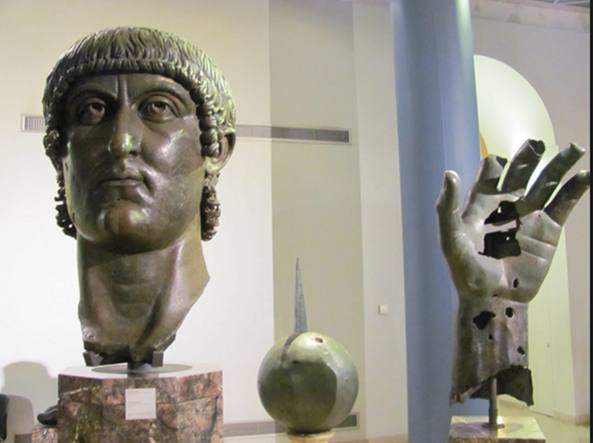Rome, exceptional discovery: identified index finger of Emperor Constantine's statue
The index finger belonging to the bronze statue ofEmperor Constantine kept in the Capitoline Museums in Rome has been found. What makes the discovery even more sensational is that, in fact, the missing piece of the statue’s hand has always been kept in the Louvre Museum!
The fragment arrived in Paris in 1860 along with other pieces from the collection of Italian marquis Giampietro Campana, which was sold to various countries and then purchased in part by Napoleon III for the Louvre. At the time, it was speculated to be the toe of a foot of a supposedly unknown colossal statue, and in 1913 it was registered as such with the reference number BR78. It was researcher Aurelia Azema who studied the fragment, guessing that it was the toe of a hand and not a foot: by calculating the proportions, she came to the conclusion that it belonged to a statue of about 12 meters.
The statue of Constantine, according to scholars, was between 10 and 12 meters in stature, but a more precise measurement is not possible. Other clues that led Azema to the conclusion that the finger came from the statue of Constantine are the casting process and stylistic similarities with the fragments from Rome.
The confirmation came on May 17, after Claudio Parisi Presicce, Capitoline Superintendent and Director of the Civic Museums of Rome Capital, Françoise Gaultier, Director of the Department of Greek, Etruscan and Roman Antiquities at the Louvre, Louvre and C2RMF researchers verified that the resin reproduction of the finger, made with a 3D model, fit the hand perfectly.
Now it remains to be understood when and how the finger came into Campana’s possession, and in this regard, Presicce speculates, "The finger likely became detached at the time of the separation between the hand and the globe it originally held, when in 1584 the latter was placed at the top of the milestone column of the First Mile of the Appian Way, placed to decorate the balustrade that closes the Capitoline square toward the Campus Martius. In an engraving published in 1759 by Abbot Diego Revillas the hand is already shown to be without its index finger."
 |
| Rome, exceptional discovery: identified index finger of Emperor Constantine's statue |
Warning: the translation into English of the original Italian article was created using automatic tools. We undertake to review all articles, but we do not guarantee the total absence of inaccuracies in the translation due to the program. You can find the original by clicking on the ITA button. If you find any mistake,please contact us.





























